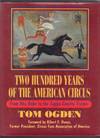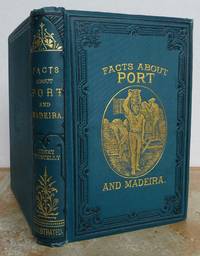

Caii Sallustii Crispi quae exstant opera. Nova edition expurgate.
by Walpole Family Copy] SALLUST (86–34 BCE) – BARBOU, Joseph Gérard (fl. 1752–1788)
- Used
- very good
- Hardcover
- Condition
- Very Good
- Seller
-
New York, New York, United States
Payment Methods Accepted
About This Item
Paris: Typis Barbou, via Mathurinensium, 1774. Hardcover. Very Good. 12mo (155 x 94mm). Pagination: xxxvj, 346pp., [2, the Catalogus]. Signatures: a(12), b(6), A-O(12), P(6). Three full-page plates engraved by Étienne Fessard (1714–1777) after Charles Nicolas Cochin (1715–1790), one is the frontispiece depicting a neoclassical scene of cherubs presenting the bust of “Crispus Sallust” to muses. Woodcut printer’s device of the brothers Barbou on title page (two flying storks feeding each other a worm in foliated ouroboros: symbolizing fraternity), typographic and engraved head- and tail pieces. Near contemporary French mottled tan calf, gilt-ruled border, spine gilt in six compartments one with red morocco lettering label and title “SALLUS/TIUS,” marbled endpapers, silk bookmark, all edges gilt; (some light edgewear and minor scuffs; few minor marginal stains throughout;
overall a very good and sound copy of this scarce edition). The signature “Tho. Walpole” on a front flyleaf verso and the armorial bookplate with heraldry of Thomas Walpole, the younger (1755–1840), Eton and Cambridge-educated British ambassador to Bavaria from 1783 to 1788 and the son of the British financier Thomas Walpole (1727–1803), also the nephew of Sir Robert Walpole (1676–1745) and cousin to Horace Walpole (1717–1797) whom he succeeded in the barony, on front pastedown. Armorial crest as the bookplate of Spencer Horatio Walpole (1806–1898), Home Secretary and second son to that Thomas (d. 1840),
affixed to front marbled endpaper and his signature under that of his father’s as “Spencer H. Walpole” with a note written in his hand about a Roman history fragment by Granus Licinianus presented to the British Museum in Dec. 1859. Thomas Walpole, the younger, was 19 years old when this new edition was issued from Barbou’s press and he likely acquired it early on for his studies. This copy remained in the Walpole family for over 120 years. Later ex-libris of the American Arthurian scholar Nathan Comfort Starr (1896–1981), affixed to a front flyleaf.
New duodecimo edition of Roman historian Sallust’s Roman history, covering the Jugurthine War, the Conspiracy of Catiline, and with the Vita of Sallust by Stephan A. Phillippe. It was first published by Joseph Gérard Barbou (fl. 1752–1788) in Paris in 1744 with the imprint “Sumptibus Mich. Steph. David filii.” Another edition was produced by Barbou in 1761, followed by this “nova edition expurgate” of 1774 as the new “cleansed” version of the text. The reading of Roman histories was incredibly important to the law-abiding and enlightened audiences of Western Europe. This copy is significant for its distinguished provenance from a branch of the Walpole family who were likely the original owners. The Walpole family were deeply entrenched in 18th century British government; it would have been crucial for Thomas and Spencer Horatio to be well-read and maintain erudite political discourse with their contemporaries. Thomas’s cousin, the better-known Horace, established the famed Strawberry Hill library and press, also contributing to the learned position of the family. The year 1774, the same year of this edition, saw the death of King Louis XV of France and much social and political tension in the decade prior to the French Revolution. Sallust’s works became particularly popular during the Enlightenment as they encouraged a deeper reading of the “mind and manners” of men. The preliminary note by Spencer Horatio proves that he had great depth of knowledge about social history and scholarly works. He was a lawyer by profession, but was appointed to the rank Home Secretary in 1852 (before the government fell) and reappointed in 1858 only to resign in 1859 (interestingly, the same year as this copy’s dated note). The Barbou press was known for their fine and ample editions of classic history works and the French engraver, Charles Nicolas Cochin (the Younger), was well-received in his time, enjoying the court patronage of Louis XV. The famous portrait engraving of Thomas Walpole, the elder, was made by Cochin, and it is likely these history engravings appealed to the family who might have regarded him as a favorite. This copy has a wonderful Walpole ownership history and is an important Sallustian Enlightenment-era work that is rarely found. OCLC locates two institutional copies in the US at NYU and BYU. Brunet V: 87.
New duodecimo edition of Roman historian Sallust’s Roman history, covering the Jugurthine War, the Conspiracy of Catiline, and with the Vita of Sallust by Stephan A. Phillippe. It was first published by Joseph Gérard Barbou (fl. 1752–1788) in Paris in 1744 with the imprint “Sumptibus Mich. Steph. David filii.” Another edition was produced by Barbou in 1761, followed by this “nova edition expurgate” of 1774 as the new “cleansed” version of the text. The reading of Roman histories was incredibly important to the law-abiding and enlightened audiences of Western Europe. This copy is significant for its distinguished provenance from a branch of the Walpole family who were likely the original owners. The Walpole family were deeply entrenched in 18th century British government; it would have been crucial for Thomas and Spencer Horatio to be well-read and maintain erudite political discourse with their contemporaries. Thomas’s cousin, the better-known Horace, established the famed Strawberry Hill library and press, also contributing to the learned position of the family. The year 1774, the same year of this edition, saw the death of King Louis XV of France and much social and political tension in the decade prior to the French Revolution. Sallust’s works became particularly popular during the Enlightenment as they encouraged a deeper reading of the “mind and manners” of men. The preliminary note by Spencer Horatio proves that he had great depth of knowledge about social history and scholarly works. He was a lawyer by profession, but was appointed to the rank Home Secretary in 1852 (before the government fell) and reappointed in 1858 only to resign in 1859 (interestingly, the same year as this copy’s dated note). The Barbou press was known for their fine and ample editions of classic history works and the French engraver, Charles Nicolas Cochin (the Younger), was well-received in his time, enjoying the court patronage of Louis XV. The famous portrait engraving of Thomas Walpole, the elder, was made by Cochin, and it is likely these history engravings appealed to the family who might have regarded him as a favorite. This copy has a wonderful Walpole ownership history and is an important Sallustian Enlightenment-era work that is rarely found. OCLC locates two institutional copies in the US at NYU and BYU. Brunet V: 87.
Reviews
(Log in or Create an Account first!)
Details
- Bookseller
- Sanctuary Books
(US)
- Bookseller's Inventory #
- WB16372
- Title
- Caii Sallustii Crispi quae exstant opera. Nova edition expurgate.
- Author
- Walpole Family Copy] SALLUST (86–34 BCE) – BARBOU, Joseph Gérard (fl. 1752–1788)
- Format/Binding
- Hardcover
- Book Condition
- Used - Very Good
- Quantity Available
- 1
- Publisher
- Typis Barbou, via Mathurinensium
- Place of Publication
- Paris
- Date Published
- 1774
Terms of Sale
Sanctuary Books
30 day return guarantee, with full refund including shipping costs for up to 30 days after delivery if an item arrives misdescribed or damaged.
About the Seller
Glossary
Some terminology that may be used in this description includes:
- Bookplate
- Highly sought after by some collectors, a book plate is an inscribed or decorative device that identifies the owner, or former...
- Fine
- A book in fine condition exhibits no flaws. A fine condition book closely approaches As New condition, but may lack the...
- Title Page
- A page at the front of a book which may contain the title of the book, any subtitles, the authors, contributors, editors, the...
- Verso
- The page bound on the left side of a book, opposite to the recto page.
- New
- A new book is a book previously not circulated to a buyer. Although a new book is typically free of any faults or defects, "new"...
- 12mo
- A duodecimo is a book approximately 7 by 4.5 inches in size, or similar in size to a contemporary mass market paperback. Also...
- Spine
- The outer portion of a book which covers the actual binding. The spine usually faces outward when a book is placed on a shelf....
- Tail
- The heel of the spine.
- Device
- Especially for older books, a printer's device refers to an identifying mark, also sometimes called a printer's mark, on the...
- Edges
- The collective of the top, fore and bottom edges of the text block of the book, being that part of the edges of the pages of a...
- Morocco
- Morocco is a style of leather book binding that is usually made with goatskin, as it is durable and easy to dye. (see also...
- Gilt
- The decorative application of gold or gold coloring to a portion of a book on the spine, edges of the text block, or an inlay in...
- Calf
- Calf or calf hide is a common form of leather binding. Calf binding is naturally a light brown but there are ways to treat the...

